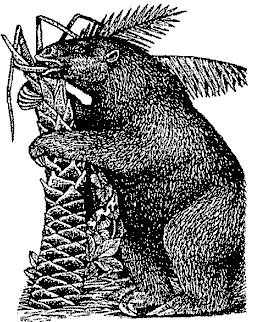 |
Science Frontiers ONLINE No. 97: Jan-Feb 1995 |
|
|
Possible Survival Of Giant Sloths In South America
For many years, rumors have been filtering out of trackless western Amazonia telling of a 6-foot, 500-pound giant sloth clothed in reddish hair. Rubber gatherers of the region report that this fearsome creature emits a hideous odor and transfixes one with a paralyzing stare! It also seems impervious to spears and shotgun pellets. Natives and some cryptozoologists equate this animal to the legendary Mapinguari.
 P. J. Wynne's impression of South America's late-surviving giant sloth. |
Owen is optimistic, however. He sees his hunt for the Mapinguari as more than just another useless monster hunt:
"If South America's largest terrestrial mammal has been hidden to science until 1994, what else does the Amazon have in terms of biodiversity that's new to us?"
(Stolzenberg, William; "Bigfoot of the Amazon," Nature Conservancy, p. 7, July/August 1994. Anonymous; "The Mother of All Sloths," Fortean Times, no. 77, p. 17, October/November 1994.)
Comment. Where is the 1897 skin? What happened to the sloth killed by the gold miners? Cryptozoology has always been plagued by disappearing critical evidence!
The possible survival of the giant sloth is covered in greater depth under BMD11 in our catalog: Biological Anomalies: Mammals II. See description here.